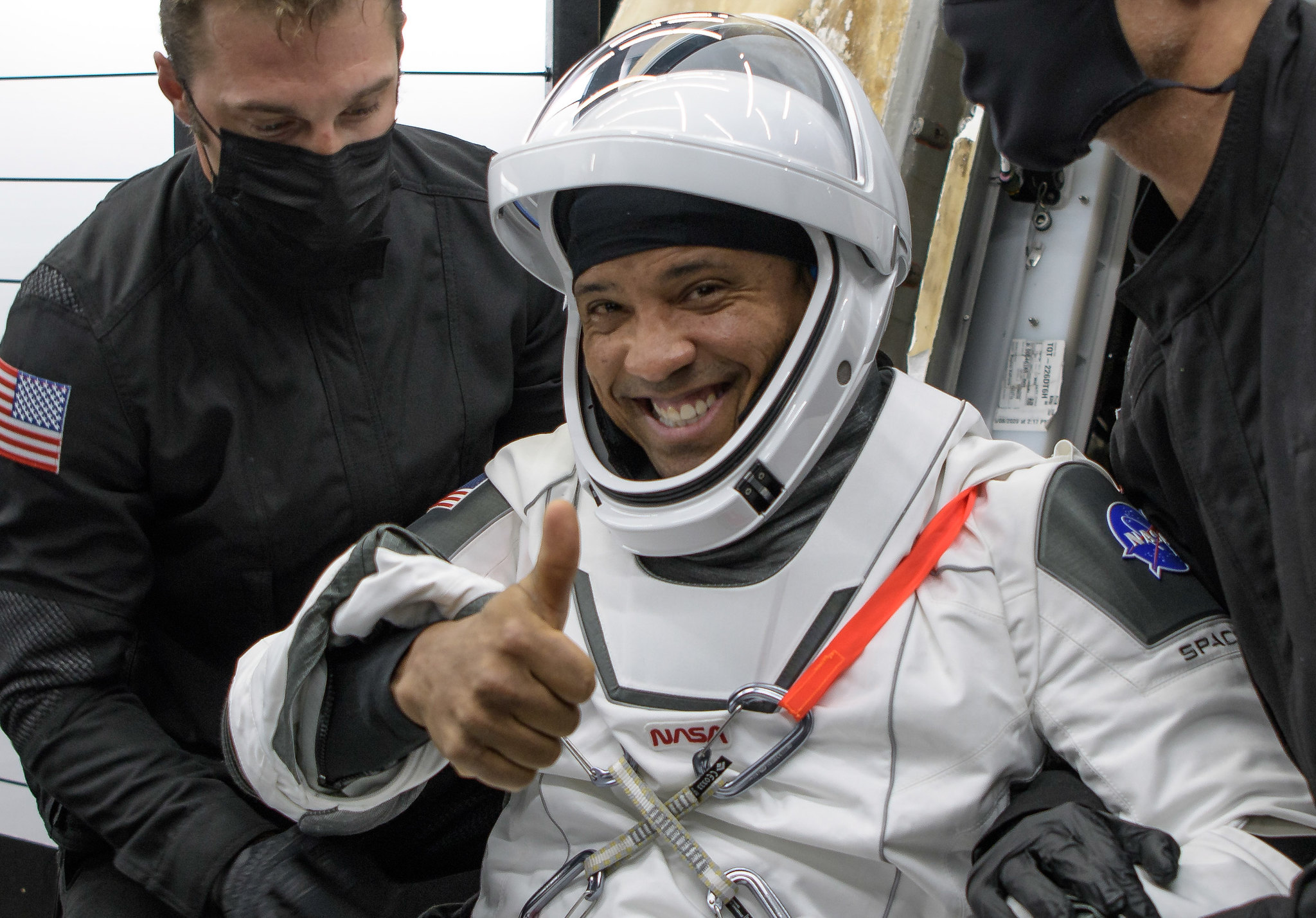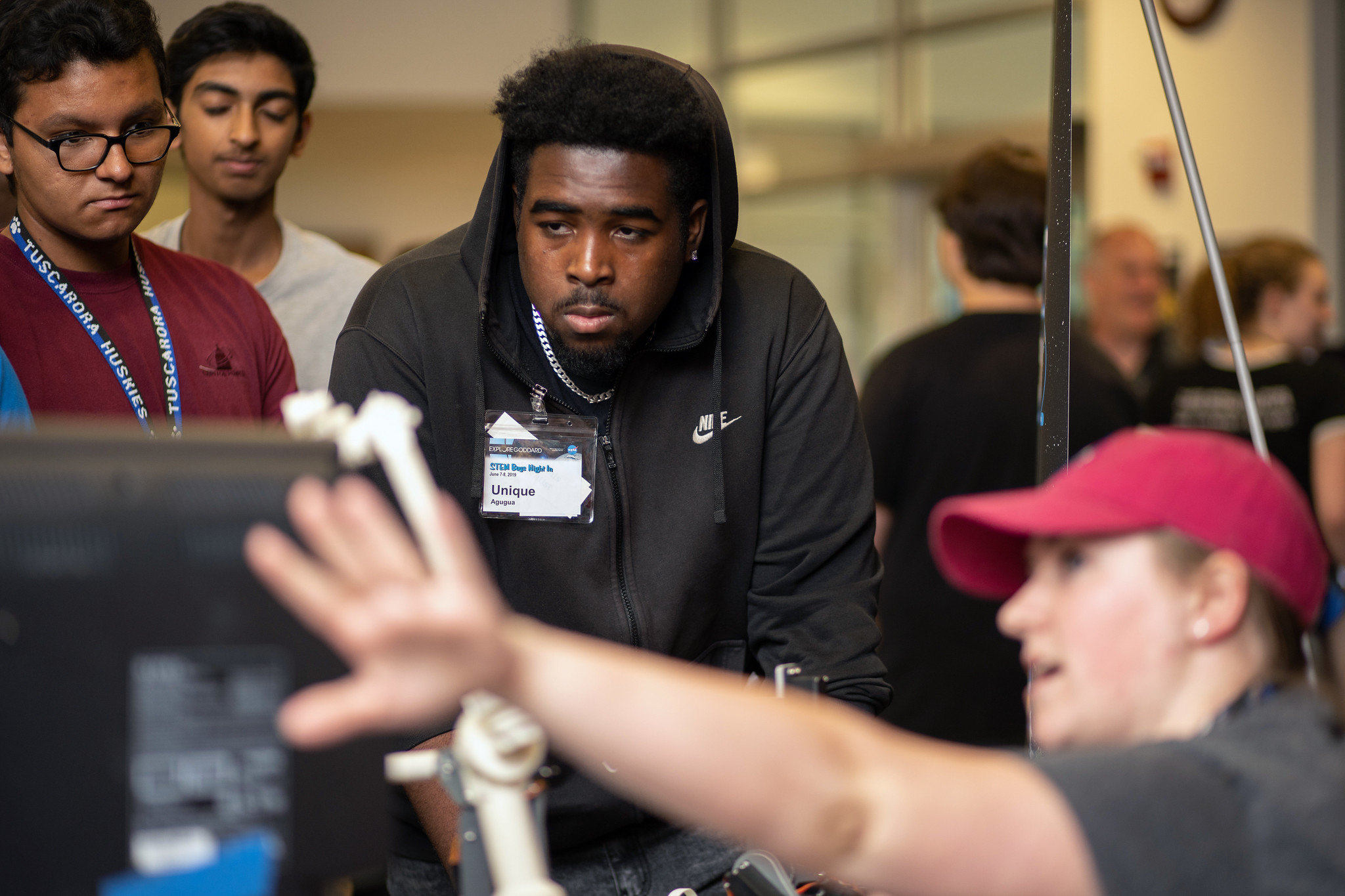'Black history is American history': NASA celebrates African Americans and space achievements at Smithsonian event
The Black History Month event Friday (Feb. 10) included astronauts, NASA directors and a discussion of why diversity matters, with high schoolers making up much of the audience.
In eighth grade, Leland Melvin was a part-time janitor at a Virginia bank to make some extra cash for his family.
Melvin, who later became a pro football player and one of NASA's Black astronauts, recalled once greeting a senior bank official while cleaning the bathroom, in the late 1970s. "He looked through me like I wasn't even there, like I was a ghost," Melvin told a Smithsonian Institution audience Friday (Feb. 10).
The livestreamed event from the National Museum of African American History and Culture in Washington, D.C. celebrated "the legacy of achievement, connection, and knowledge of African Americans at NASA" for February's Black History Month. Several speakers repeated this mantra: "Black history is American history."
Melvin was so devoted to science as a child he once accidentally created a minor but "incredible explosion" in his mother's living room with a chemistry set, he told the high school audience. So he had one big takeaway from that interaction at the bank to share: "I said to myself, 'I never want to have someone feel like I felt.' I said, 'I will continue to rise. I won't let a person like that influence me or keep me from rising.' "
Related: How astronaut Leland Melvin went from the NFL to space (exclusive video)
Black History Month is a time for Americans to reflect on the successes and challenges the African-American population has faced over the centuries, from enslavement to discrimination to "Jim Crow" laws that enforced racial segregation. Numerous societal issues continue to hurt Black people today in fields as diverse as education and housing.
The speakers at the Smithsonian acknowledged these issues while also pointing to drive, talent, community-building and other traits that unite African Americans and indeed, all of humanity. "We need to know Black history because it is one important facet of our story," current NASA astronaut Victor Glover said.
Get the Space.com Newsletter
Breaking space news, the latest updates on rocket launches, skywatching events and more!
Glover made it to NASA after a lifetime of curiosity, encouraged by his parents; he was born out of wedlock, he explained, but both his father and mother wanted him to pursue education. Then he saw a shuttle launch on television when he was about 10 years old, in roughly 1985 or 1986. "That was the first time that seed was planted," Glover said, of the interest in science that led him to Naval aviation and eventually, the astronaut corps.
"All of us should be able to celebrate these accomplishments," Glover added, "no matter what you look like, no matter how old you are, or where or when you come from. It's our story. That's why and we should take ownership of it."
Related: 'The Color of Space': Watch NASA's documentary celebrating Black space explorers for Juneteenth

Glover was the first long-duration Black astronaut in space in 2020-21, a far overdue milestone given NASA has been occupying the International Space Station permanently since 2000. NASA is working on fixing historical inequity issues in the agency like this.
To take a few examples: Black women engineers and mathematicians now known as "Hidden Figures" paid key planning roles in the early astronaut space program of the 1960s while facing segregation and discrimination. Black male astronaut Guion "Guy Bluford" was first to fly at NASA in 1983, 22 years after the first agency white male. Then it took until 1992 to fly the first female African-American astronaut, Mae Jemison, and until 2022 for Jessica Watkins to be the first Black woman on a long-duration mission.
Fortunately, things are changing. "When I first started at NASA, especially as a female engineer and especially as a Black female engineer, there were not a lot of people that looked like me," said Vanessa Wyche, now director of NASA's Johnson Space Center. She joined NASA in 1989.
Having more people of diverse backgrounds, Wyche emphasized, is "a part of our mission. Diverse teams, she said, "are better able to solve problems because we're doing it with different mindsets. Those are some of the changes that I've seen."
Related: NASA, ESA experts weigh in on diversity and inclusion in space

Clayton Turner, the first African American to serve as the director of NASA's Langley Research Center in Virginia, said success in recruiting for diversity comes from not only constant commitment, but from starting the process early.
On Turner's first day at work as director in 2019, he says he was actively recruiting—to three- and four-year-olds. "We talked about the solar system, and I was a sun. They were the planets," he said. "I spun, they spun, they laughed, then we fell."
But from there, the conversation did—in all seriousness—turn to an age-appropriate discussion about coding, thermodynamics, engineering and aerospace, he recalled.

"No, I have not lost my mind," Turner continued. "There are actually books for that. I held a ball, and I dropped it. A three-year-old, I asked her why the ball fell, and she said, 'Because it's not a balloon.' And then she told me why the balloon went up."
Turner turned to the high school audience and added: "I'm eager to talk to as many of you as I can. That's our recruiting. All of us. All 17,000 people at NASA are looking for you to come join us. NASA is an amazing place. But it is not an impossible place. We need you to come join us. We need you to come and join our industry partners. We need you in academia. Because what we want to do is reach for new heights, to reveal the unknown, for the benefit of humanity."
Elizabeth Howell is the co-author of "Why Am I Taller?" (ECW Press, 2022; with Canadian astronaut Dave Williams), a book about space medicine. Follow her on Twitter @howellspace. Follow us on Twitter @Spacedotcom or Facebook.
Join our Space Forums to keep talking space on the latest missions, night sky and more! And if you have a news tip, correction or comment, let us know at: community@space.com.

Elizabeth Howell (she/her), Ph.D., was a staff writer in the spaceflight channel between 2022 and 2024 specializing in Canadian space news. She was contributing writer for Space.com for 10 years from 2012 to 2024. Elizabeth's reporting includes multiple exclusives with the White House, leading world coverage about a lost-and-found space tomato on the International Space Station, witnessing five human spaceflight launches on two continents, flying parabolic, working inside a spacesuit, and participating in a simulated Mars mission. Her latest book, "Why Am I Taller?" (ECW Press, 2022) is co-written with astronaut Dave Williams.
